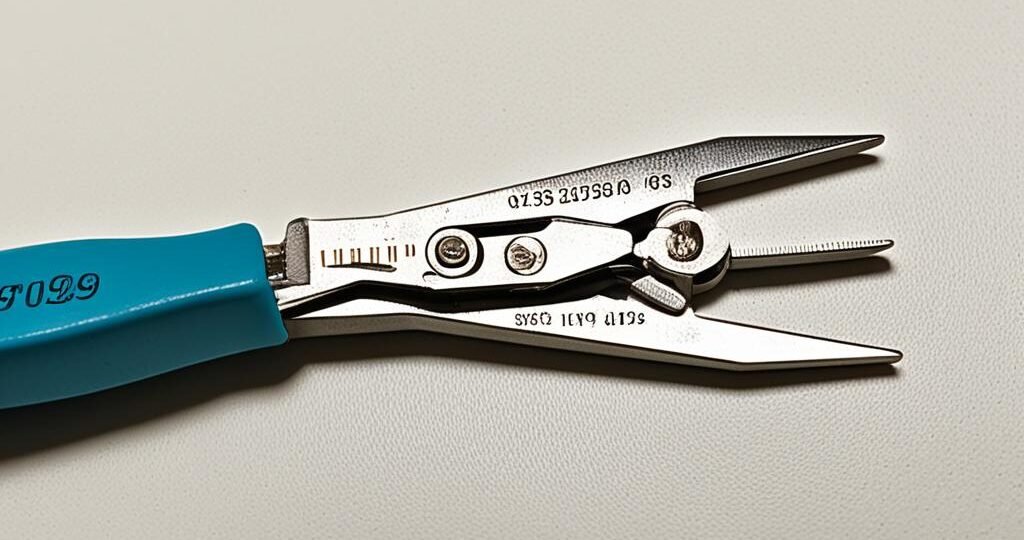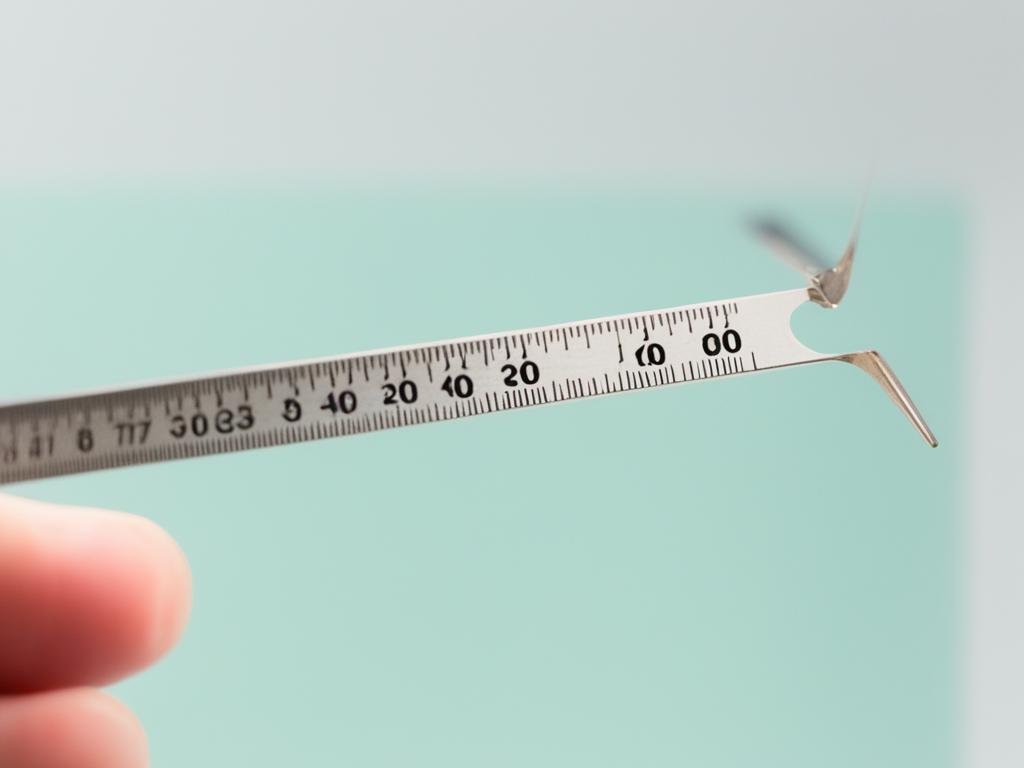
Dive into jewelry making and crafts, learning and growing with each project. At Devil n Dove, we believe that every creation tells a story. From the first sketch to the final piece, we invite you to be a part of our adventure.
Are you passionate about jewelry making? Do you want to explore the world of crafts and unleash your creativity? Look no further! We are here to inspire and guide you every step of the way.
Our team at Devil n Dove believes in the power of curiosity and the joy of crafting. With our tutorials, tips, and techniques, you can learn how to measure and cut jewelry wire with precision. Whether you’re a beginner or an experienced crafter, we have something for everyone.
Discover the best practices for measuring jewelry wire, explore different jewelry wire cutting tools, and follow our step-by-step guide for cutting jewelry wire. We will provide you with the knowledge and skills to transform your ideas into unique and stunning pieces of jewelry.
To ensure your safety and success, we will also share valuable tips on jewelry wire cutting techniques and the importance of taking proper precautions. Your journey with us will not only be creative but also safe and fulfilling.
Subscribe to our channel and hit the notifications bell to stay updated with our latest videos and content. We promise to deliver a world of inspiration and creativity, right at your fingertips.
Welcome to Devil n Dove, where every creation tells a story. Join us on this exciting and rewarding journey of jewelry making and crafts. Together, let’s bring your artistic visions to life!
- Learn valuable techniques for measuring and cutting jewelry wire
- Discover the best practices for precision wire cutting
- Explore a wide range of jewelry wire cutting tools
- Follow our step-by-step guide for cutting jewelry wire
- Unleash your creativity and dive into the world of jewelry making
Support us at www.devilndove.com or shop with us at www.devilndove.online for all your jewelry making needs.
Determining the Length of Wire for a Bracelet and a Ring
When it comes to creating jewelry, measuring the wire accurately is crucial for achieving the desired fit and look of your bracelets and rings. In this section, we will guide you through the process of determining the correct wire length for both bracelets and rings.
Measuring Wire for a Bracelet
To begin, you will need to measure the size of your wrist. Use a flexible measuring tape or a piece of string to determine the circumference of your wrist. Once you have the measurement, add a margin of comfort to ensure a proper fit.
Consider the size of the beads you plan to use in your bracelet design. If you are using larger beads, you may need to add additional wire length to accommodate their size.
For example, let’s say your wrist measures 15 cm and you want to create a bracelet with beads that are 0.8 cm in size. In this case, you would need to cut approximately 29 cm of wire to account for the size of your wrist and the beads. Don’t forget to add extra length for finishing touches and clasps.
Measuring Wire for a Ring
Determining the wire length for a ring follows a similar process. Begin by measuring the circumference of the finger that the ring will be worn on. Allow for a slight ease, approximately 0.5 cm, to ensure a comfortable fit.
Adding a margin for the finish is also important. A standard margin of 5 cm is usually sufficient, but you can adjust this measurement based on your design and personal preference.
By following these measurements as a starting point, you can create bracelets and rings that fit well and look beautiful. Keep in mind that it’s always a good idea to measure the remaining wire to determine the exact length needed for your specific design.
We hope these tips will help you accurately measure the wire for your jewelry projects. Stay tuned for the next section, where we will discuss how to measure wire length for necklaces.
Measuring Wire Length for a Necklace
When it comes to creating a necklace, determining the right wire length is crucial for achieving the desired look and fit. The length of wire needed depends on the specific type of necklace and design elements you have in mind. From chokers to opera-length necklaces, each style requires a different wire length to ensure a perfect result. To make your necklace, you’ll need to measure the wire accurately and consider various factors, such as bead or pendant size, desired length, and any additional finishing touches.
To measure the wire length for your necklace, start by deciding on the desired necklace length. Refer to the different necklace length names, such as choker, princess length, matinee length, and opera-length, and choose the one that best suits your style. Once you have your desired length, you can add approximately 10 cm to account for any finishing touches or clasps.
For example, let’s say you want to create a princess-length necklace, which typically measures around 45 cm. To determine the wire length needed, you can add 10 cm, resulting in a total wire length of 55 cm. This additional length allows room for any decorative elements, hooks, or clasps that you may want to add to your necklace.
It’s important to note that these measurements are estimates, and the wire length needed may vary depending on the specific design and desired look of your necklace. Additionally, if you plan to incorporate beads or pendants into your necklace, be sure to consider their size and how they will affect the total length.
| Necklace Length | Wire Length (approximate) |
|---|---|
| Choker | 35 cm + 10 cm = 45 cm |
| Princess Length | 45 cm + 10 cm = 55 cm |
| Matinee Length | 55 cm + 10 cm = 65 cm |
| Opera Length | 75 cm + 10 cm = 85 cm |
Remember that these measurements are just a starting point, and it’s always a good idea to measure the wire length again once you have finalized your design and layout. This ensures that you have the right amount of wire to bring your necklace vision to life.
Incorporating the right wire length into your necklace-making process is essential for creating beautiful, well-proportioned pieces. By understanding the different necklace lengths, calculating the appropriate wire length, and considering design elements, you can confidently create stunning necklaces that fit perfectly and showcase your unique style. Visit our website at www.devilndove.com or our online store at www.devilndove.online to explore our wide selection of jewelry-making supplies and inspiration for your next necklace project.
Wire Length for Bead Weaving
When it comes to bead weaving, determining the appropriate wire length can be a challenge. Unlike other jewelry making techniques, there is no set length for bead weaving. However, there are some general guidelines that can help you find the right length for your project.
Wire Arm Length
One common approach is to cut a piece of wire the length of the distance between your arms, also known as “wire arm length.” This measurement provides you with a comfortable amount of wire to work with and minimizes the need to constantly pull long lengths of wire. The recommended wire arm length is generally between 1.3 and 1.7 meters, or sometimes 2 meters.
Once the wire is threaded onto the needle, the length is halved. So, if you start with a wire arm length of 1.5 meters, you will have approximately 75 centimeters of usable wire once it is passed over the needle.
Wire Replacement and Securing Techniques
It’s important to stay mindful of the length of your thread when bead weaving. When you have only a short length left, it’s best to replace the thread to ensure you have enough to complete your project. To secure the thread and prevent your beads from slipping off, you can make knots or pass the thread back through the beads.
These techniques can be applied to various bead weaving techniques, such as needle weaving, Peyote stitch, brick stitch, and loom weaving. By following these guidelines and adjusting them to suit your specific project, you can ensure that you have enough wire to create beautiful beadwork.
Please support us at www.devilndove.com or visit our store at www.devilndove.online.
Conclusion
When it comes to jewelry making, precision in wire cutting is essential to achieve the desired fit and look of your final piece. By carefully measuring the appropriate wire length and considering factors such as the type of jewelry, the size of beads, and the technique used, you can ensure a professional and polished result.
Using the right tools for cutting wire is crucial for achieving accuracy. Pliers and wire cutters specifically designed for jewelry making will help you achieve clean and precise cuts. Be sure to choose the appropriate tool for the type of wire you are working with to avoid damaging the wire and compromising the quality of your jewelry.
Additionally, it is important to prioritize safety when cutting wire. Wear protective glasses to shield your eyes from any potential wire fragments or sharp ends. If you are working with electrical wires, make sure to shut down any power sources to mitigate any potential risks.
By employing these jewelry wire cutting techniques and adhering to proper measurements, you can create stunning and well-fitting jewelry pieces with ease. Remember to visit our website www.devilndove.com or our online store at www.devilndove.online for more inspiration and to shop our selection of jewelry.
FAQ
How do I measure and cut jewelry wire?
To measure and cut jewelry wire, you need to consider the type of jewelry you want to create, such as bracelets, necklaces, or rings. The length of wire needed will vary depending on the design, size, and technique used. Measure your wrist size and add a margin of comfort for bracelets, or determine the desired length of the necklace. For rings, you can use a specific measurement technique. Once you have the desired wire length, use appropriate wire cutting tools like pliers or wire cutters to cut the wire to the desired length.
How do I determine the length of wire needed for a bracelet and a ring?
For a bracelet, measure the size of your wrist and add a margin of comfort. Take into account the size of beads and the desired fit of the bracelet. To determine the wire length for a ring, consider adding 0.5 cm of ease and 5 cm of margin for the finish. These measurements provide a good starting point, but always measure the remaining thread to determine the exact length needed for your bracelet or ring.
How do I measure wire length for a necklace?
The length of wire needed for a necklace depends on the desired length of the necklace itself. You can add approximately 10 cm for finishing touches. Keep in mind that these measurements are estimates and can vary depending on the design and desired look of the necklace. The type and size of beads or pendants used can also affect the wire length needed.
What is the wire length for bead weaving?
In bead weaving, there is no defined length of wire for most techniques. One common approach is to cut a piece of wire the length of the distance between your arms, also known as “wire arm length.” This length is usually between 1.3 and 1.7 meters or sometimes 2 meters. It allows for comfortable weaving and minimizes the need to constantly pull long lengths of wire. It’s important to replace the thread when you have only a short length left and to secure the thread by making knots or passing it back through the beads.
What are the best practices for measuring and cutting jewelry wire?
Precision is key when measuring and cutting wire for jewelry making. Take into account the type of jewelry, the size of beads, and the technique used to determine the appropriate wire length. Different wire cutting tools, such as pliers and wire cutters, are suitable for different types of wire. Remember to take safety precautions, like wearing protective glasses and shutting down power sources for electrical wires. By following these tips and techniques, you can create beautiful and well-fitting jewelry pieces every time.
Source Links
RELATED POSTS
View all



